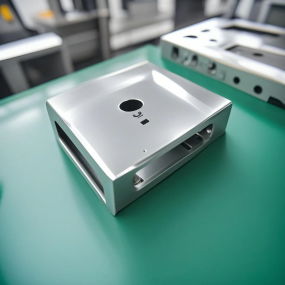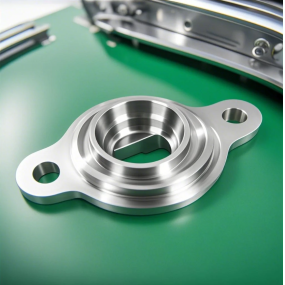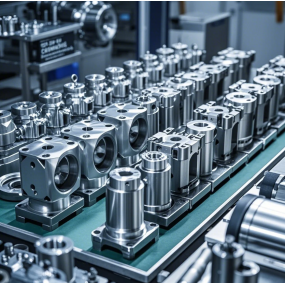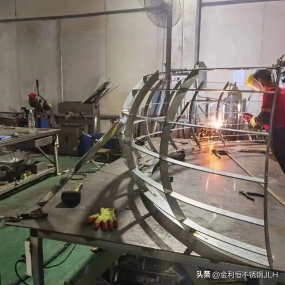Stainless steel is often divided into martensitic steel, ferritic steel, austenitic steel, austenitic ferritic (duplex) stainless steel, and precipitation hardened stainless steel according to their organizational state. In addition, it can be divided into chromium stainless steel, chromium nickel stainless steel, and chromium manganese nitrogen stainless steel according to their composition. There is also a specialized stainless steel for pressure vessels, GB24511_2009_Steel Steel Plates and Strips for Pressure Equipment.
Ferritic stainless steel
Containing 15% to 30% chromium. Its corrosion resistance, toughness, and weldability increase with the increase of chromium content, and its resistance to chloride stress corrosion is better than other types of stainless steel, including Crl7, Cr17Mo2Ti, Cr25, Cr25Mo3Ti, Cr28, etc. Ferritic stainless steel has good corrosion resistance and oxidation resistance due to its high chromium content, but its mechanical and process properties are poor. It is mostly used in acid resistant structures with low stress and as an oxidation resistant steel. This type of steel can resist corrosion from atmospheric, nitric acid, and saltwater solutions, and has good high-temperature oxidation resistance and low thermal expansion coefficient. It is used in nitric acid and food factory equipment, and can also be used to make parts that work at high temperatures, such as gas turbine parts.
Austenitic stainless steel
It contains more than 18% chromium, around 8% nickel, and small amounts of molybdenum, titanium, nitrogen, and other elements. Good comprehensive performance and can withstand corrosion from various media. The commonly used grades of austenitic stainless steel include 1Cr18Ni9, 0Cr19Ni9, etc. The Wc of 0Cr19Ni9 steel is less than; 0.08%, marked as“ in the steel grade; 0”. This type of steel contains a large amount of Ni and Cr, which makes the steel in an austenitic state at room temperature. This type of steel has good plasticity, toughness, weldability, corrosion resistance, and is non-magnetic or weakly magnetic. It has good corrosion resistance in both oxidizing and reducing media and is used to make acid resistant equipment, such as corrosion-resistant containers and equipment linings, conveying pipelines, nitric acid resistant equipment parts, etc. In addition, it can also be used as the main material for stainless steel clock accessories. Austenitic stainless steel is generally treated with solid solution, which involves heating the steel to 1050-1150 ℃ and then cooling it with water or air to obtain a single-phase austenitic structure.
Austenitic ferritic duplex stainless steel
It combines the advantages of austenitic and ferritic stainless steel, and has superplasticity. Stainless steel with austenite and ferrite structures each accounting for about half. In the case of low carbon content, the chromium (Cr) content is between 18% and 28%, and the nickel (Ni) content is between 3% and 10%. Some steels also contain alloying elements such as Mo, Cu, Si, Nb, Ti, N, etc. This type of steel combines the characteristics of austenitic and ferritic stainless steel. Compared with ferritic stainless steel, it has higher plasticity and toughness, no room temperature brittleness, significantly improved intergranular corrosion resistance and welding performance. At the same time, it maintains the 475 ℃ brittleness and high thermal conductivity of ferritic stainless steel, and has characteristics such as superplasticity. Compared with austenitic stainless steel, it has higher strength and significantly improved resistance to intergranular corrosion and chloride stress corrosion. Dual phase stainless steel has excellent resistance to pitting corrosion and is also a nickel saving stainless steel.
Precipitation hardening stainless steel
The matrix is austenitic or martensitic structure, and common grades of precipitation hardened stainless steel include 04Cr13Ni8Mo2Al, etc. Stainless steel that can be hardened (strengthened) through precipitation hardening (also known as age hardening) treatment.
Martensitic stainless steel
High strength, but poor plasticity and weldability. The commonly used grades of martensitic stainless steel include 1Cr13, 3Cr13, etc. Due to their high carbon content, they have high strength, hardness, and wear resistance, but slightly lower corrosion resistance. They are used for some parts with high mechanical performance requirements but general corrosion resistance requirements, such as springs, turbine blades, hydraulic compressor valves, etc. This type of steel is used after quenching and tempering treatment. Annealing is required after forging and stamping.
Stainless steel plates and strips for pressure equipment
Special stainless steel for pressure vessels has clear requirements for classification and code, size, shape and allowable deviation, technical requirements, test methods, inspection rules, packaging, labeling, and product quality certificates. The commonly used grades include 06Cr19Ni10 and 022Cr17Ni12Mo2, with numerical codes such as S30408 and S31603. Mainly used for hygiene grade equipment such as food machinery and pharmaceutical machinery.


 Spanish
Spanish Arabic
Arabic French
French Portuguese
Portuguese Belarusian
Belarusian Japanese
Japanese Russian
Russian Malay
Malay Icelandic
Icelandic Bulgarian
Bulgarian Azerbaijani
Azerbaijani Estonian
Estonian Irish
Irish Polish
Polish Persian
Persian Boolean
Boolean Danish
Danish German
German Filipino
Filipino Finnish
Finnish Korean
Korean Dutch
Dutch Galician
Galician Catalan
Catalan Czech
Czech Croatian
Croatian Latin
Latin Latvian
Latvian Romanian
Romanian Maltese
Maltese Macedonian
Macedonian Norwegian
Norwegian Swedish
Swedish Serbian
Serbian Slovak
Slovak Slovenian
Slovenian Swahili
Swahili Thai
Thai Turkish
Turkish Welsh
Welsh Urdu
Urdu Ukrainian
Ukrainian Greek
Greek Hungarian
Hungarian Italian
Italian Yiddish
Yiddish Indonesian
Indonesian Vietnamese
Vietnamese Haitian Creole
Haitian Creole Spanish Basque
Spanish Basque










